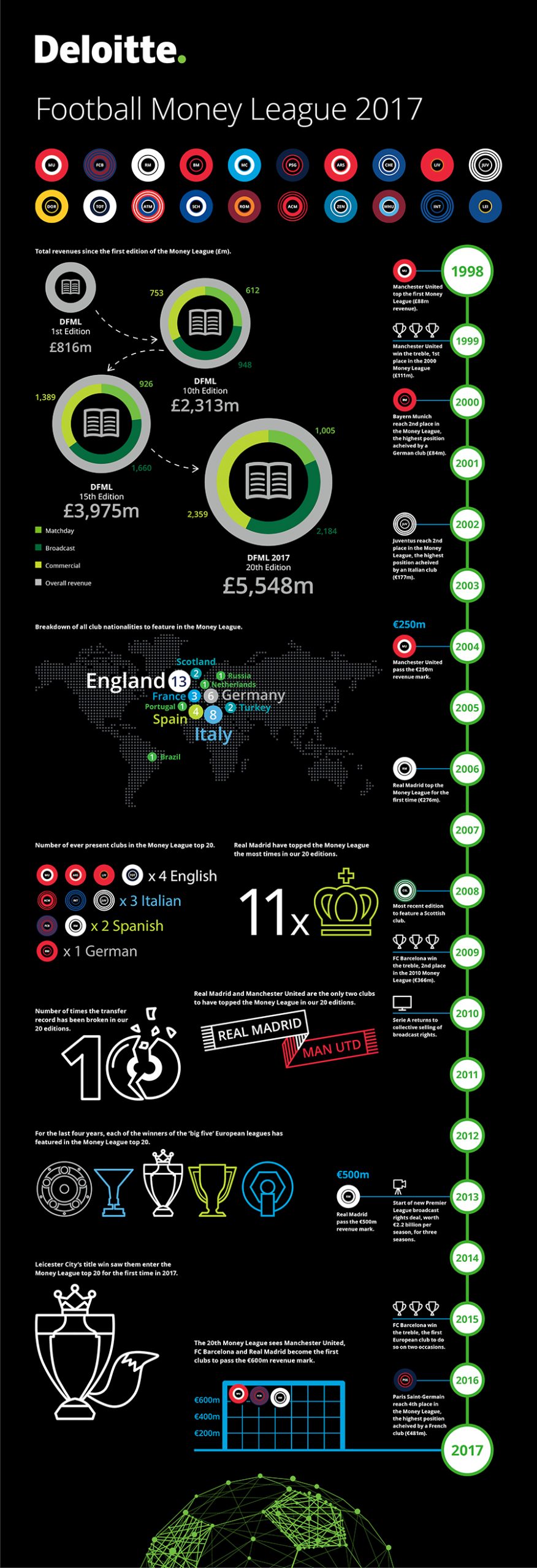The latest edition of the Deloitte Money League has appeared. Aggregate revenue for the top 20 Money League clubs rose 12% to €7.4 billion (£5.5 billion) in 2015/16, a new record, with three clubs breaking the €600m barrier. The infographic below shows the evolution of the Money League over the last twenty years.
The latest edition of the Deloitte Money League has appeared. Aggregate revenue for the top 20 Money League clubs rose 12% to €7.4 billion (£5.5 billion) in 2015/16, a new record, with three clubs breaking the €600m barrier. The infographic below shows the evolution of the Money League over the last twenty years.
Manchester United achieved record revenues of €689m in 2015-16, supplanting Real Madrid which had led the Money League for the last 11 seasons.
Manchester United’s rise is largely the result of a €100m increase in commercial revenues. Its 10-year kit deal with Adidas kicked in, while it had a diverse range of ‘global partnerships’ with India’s Apollo Tyres, taxi ap group Uber, and Chinese mattress maker Milly.
FC Barcelona (€620.2m) and Real Madrid (€620.1m) complete the Money League top three, as they did in the first edition of the Money League, produced for the 1996/97 season.
To cap a remarkable year, Leicester City take their place as the 20th highest revenue-generating club in world football. Boosted by their title-winning campaign, their 2015/16 revenue of €172.1m (£128.7m) is almost five times as much as the amount they generated two years previously in the 2013/14 season.
With Premier League clubs set to benefit from increased revenue due to their record television contracts in 2016/17, there is a strong chance that almost all Premier League clubs will be in the top 30 clubs next year. This year eight Premier League clubs make the top twenty.
Yet it is worth remembering that Sunderland are the 29th richest club in Europe, yet they are struggling and in financial difficuilties. From their perspective, the system is broken.
Deloitte Sports business partner Dan Jones commented, ‘Every year we get asked, “Is the bubble bursting in football?”, but we have always felt there has been room for growth.’
‘The real question is, how fast will that growth be? Twenty years ago it would have been hard to envisage clubs achieving €600m in revenues. Now, we have clubs saying they want to achieve €1bn in revenues. I don’t think that’s an unrealistic goal.’
One of the predictions made is that a Chinese Super League club will join the top 30 by 2030.

